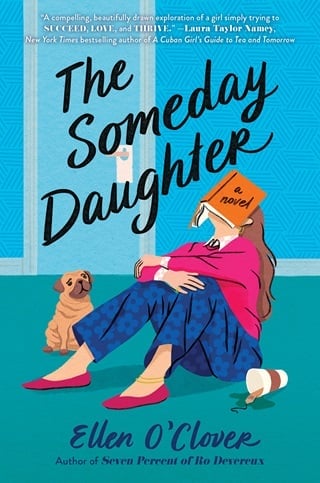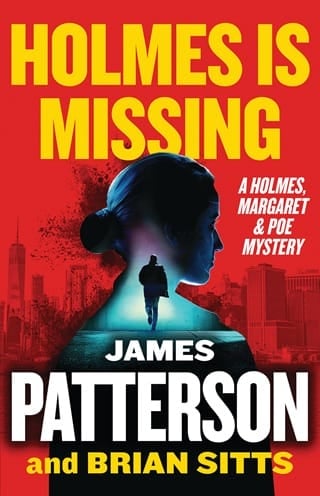Chapter 16
Desert Winds rises from a flat red mesa like the only human dwelling on Mars. It’s surrounded by scrub grass and low, crawling cacti—all smooth adobe and wooden beams, turquoise window frames pressed into its face like jewels. The double front doors are pushed open to let in the cool morning, and a man in white linen stands waiting for us there.
“Sadie-May,” he says, smiling broadly as we approach. “Aren’t y’all a sight for sore eyes.”
His accent is deeply southern—his face, too: blond hair and beach-tanned skin, like he grew up under the sun and never came inside.
“Hey, Dustin,” Sadie says, accepting the hug he offers. “It’s beautiful out here.”
“Not too bad, right?” He glances inside, then turns his blue eyes on me. He’s maybe forty, the faintest hints of silver at his temples. “You must be Miss Audrey.”
“Sure am,” I confirm, offering a hand. “Thanks so much for doing this.”
“Thank you,” Dustin says. “We’ve got quite a few Camilla St. Vrain fans in here. Eager to meet you.”
It takes everything I have not to roll my eyes.
“Dustin and I met at a conference a few years ago,” Sadie says, pulling off her sunglasses and folding them into a case. “We were on a panel with Aiyla—Dr. Osman. Dustin’s the lead psychiatrist here at Desert Winds, but until recently he was in a private practice outside Savannah.”
“Hard to believe,” Dustin says. He lets out a gust of air. “Already feels like I’ve been at Desert Winds my whole life. This place kind of has a way of making the rest of the world fade away. Which is the point, of course, for the patients we treat.” He gestures through the open door. “Why don’t y’all come in? We’ve got a group just started I’d love to introduce you to, and then we can head to my office for some Qs and As.”
Sadie waves me ahead of her and I step inside, where the lobby is all terra-cotta tiles and sun striping in from the windows. Dustin’s right: the space is so beautiful, so ethereal, that the rest of the world seems faraway and almost irrelevant. Nothing bad, it feels, could happen in a place like this. He leads us to a lounge area with French doors overlooking a pool, where eight people are grouped on white couches in front of a massive fireplace.
“...but I know it’s my trauma speaking,” one woman is saying. She’s wrapped in a gauzy turquoise sweater, bare feet tucked under her. “It’s like I’m split, the part of me that knows the right way and the part of me that’s still stuck back there, when—”
She breaks off as we step into the room, and all eight sets of eyes fall on me.
“Audrey St. Vrain,” another woman says. A smile spreads across her face, and I manage one in return. “Oh my goodness, we were just talking about your mother a minute ago.”
“‘If we believe other people deserve kindness from us, logic follows that we deserve kindness,’” turquoise-sweater woman says. “‘Because we, too, are somebody’s ‘other people.’ That quote changed my life.”
I know it, of course. Chapter three of Letters to My Someday Daughter.
“Mine is ‘Be your own safest place,’” a man says, seated right in front of the fire. “I have that one on a sticky note on my mirror.”
They’re looking at me like I wrote those things myself. Like they came from me by association, or like I at least know the woman who wrote them well enough to serve as a conduit. I slide one arm behind my back, count my fingers in silence where nobody can see.
“What’s it like,” a third woman asks, her voice soft with wonder, “to live with her?”
I feel Sadie turn to look at me, feel the eyes of every single person in the room. Always, my life cast through the lens of who I am to Camilla. And always, no idea how to explain who I am to her—because I’ve never been able to tell.
“I don’t live with her” is the only answer I can think of.
What I want to say: I’m not here to talk about her. This was supposed to be the one part of this summer that’s not about her.
What I actually say: “But I’m really glad she’s helped you all so much.”
Later, on the quiet drive home, Sadie finally breaks the silence. “That was generous of you.”
“What was?” I’m looking out the window, watching New Mexico careen past. It’s like Colorado but wilder, redder, less mine. I’m thinking about the ICU shadowing position at Hopkins Hospital this fall, imagining that version of Audrey just two and a half months from now. The hospital badge clipped to my blazer, the notepad in my hand, all the tangible things for me to learn. I’m thinking about how much I’m going to matter there. Not because of my mother—because of myself.
“What you said to them,” Sadie goes on. “About how you’re glad Camilla’s helped them heal.” I finally turn to look at her—her window’s down and the wind is whipping her hair around her face. She glances at me through the tornado of it. “I can tell that’s not how you feel, and you didn’t need to say it. But you did.”
I don’t know how to respond, so I just nod. I’m still looking out the window, five full minutes later, when she speaks again.
“I don’t know what’s happened between you,” Sadie says. “But for what it’s worth, Audrey, it sounded to me like she was trying this morning.” I look at her, and our eyes connect under the incandescent midday sun. “And it was you pushing her away.”
 Fullepub
Fullepub 



